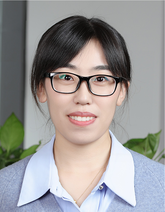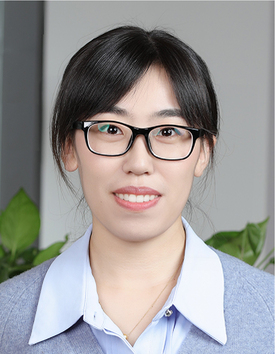Chen Wang
Graphical Abstract
 |
Position, Location: | Professor, School of Chemistry and Molecular Engineering, East China Normal University, Shanghai (China) |
| Homepage: | https://faculty.ecnu.edu.cn/_s34/wc2_en/main.psp; https://www.x-mol.com/groups/chen_wang?lang=en | |
| ORCID: | orcid.org/0000–0003–2555–5355 | |
| Education: | 2008–2012 BS in Chemistry, Beijing University of Chemical Technology (China) 2012–2017 PhD in Chemistry (Supervisor: Prof. Guangtao Li), Tsinghua University (China) 2017–2021 Postdoctoral researcher (Supervisor: Prof. Itamar Willner), Hebrew University of Jerusalem (Israel) |
|
| Research: | Supramolecular chemistry, DNA-based biomaterials | |
| Hobbies: | Swimming, travelling |
My favorite structures are supramolecular cages with their rich host–guest chemistry and great potential in catalysis, sensing, separation, and biomedical applications.
Science is fun because it constantly explores the unknown.
My first experiment was metal-enhanced fluorescence based on mussel-inspired chemistry, published in The Journal of Physical Chemistry C (J. Phys. Chem. C 2014, 118, 10754–10763).
A skill that I would still like to learn is machine learning.
To keep up with the latest research in my field, I rely on regularly searching recent literature in scientific databases and following science news updates.
My favorite aspect of attending conferences is learning new concepts from speakers from around the world.
The most important feature of a good working environment is that it is clean and quiet.
I advise my students to stay curious, motivated, and keep working hard.
When I go into the lab, my students always update me on their recent progress – whether the results are successful or not.
The most important quality of a mentor is to radiate positive energy.
To improve my work-life balance, I take weekends off to spend time with my family.
When I was a kid I wanted to be a teacher, a dream shared by both me and my mother.
If I won a million dollars in the lottery I would buy a new house for my mother and establish a scholarship in her name.
My favorite place on earth that science has taken me to is Jerusalem, where science and love intersect.
My favorite drink is milk – it always gives me energy.
Behind the Science
Pd-based intracellular catalysis has attracted increasing interest in modulating biological processes. The unsatisfactory catalytic efficiency arising from the limited number of active sites and the poor water solubility of Pd nanoparticles (NPs) as well as their “always on” catalytic activities, however, pose significant limitations. To overcome these, we have developed a high-performance nanocomposite based on ultrafine Pd NPs confined within molecular cages, and combined them with glucose oxidase (GOx) and aptamer-modified hyaluronic acid (HA). The nanocomposite exhibits bio-orthogonal catalytic and multienzyme mimicking activities, which can be selectively activated in tumors and enables spatially targeted intracellular catalysis for therapy. DFT analyses carried out in collaboration with Profs. Zhubin Hu and Itamar Willner reveal that the molecular cage influences the substrate's structure during the adsorption process and reduces the energy for bond cleavage, thereby facilitating the catalysis. Thus, the main challenge was overcome by the cage-confined configuration.
The author presented on this page has published her first article as a submitting corresponding author in Angewandte Chemie:
“An Activatable Caged Palladium Nanocomposite for Targeted Cancer Therapy”: J. Tang, C. Li, W. Ma, Z. Ba, Z. Hu, I. Willner, C. Wang, Angew. Chem. Int. Ed. 2025, 64, e202503485.
International edition: DOI: 10.1002/anie.202508077
German edition: DOI: 10.1002/ange.202508077





